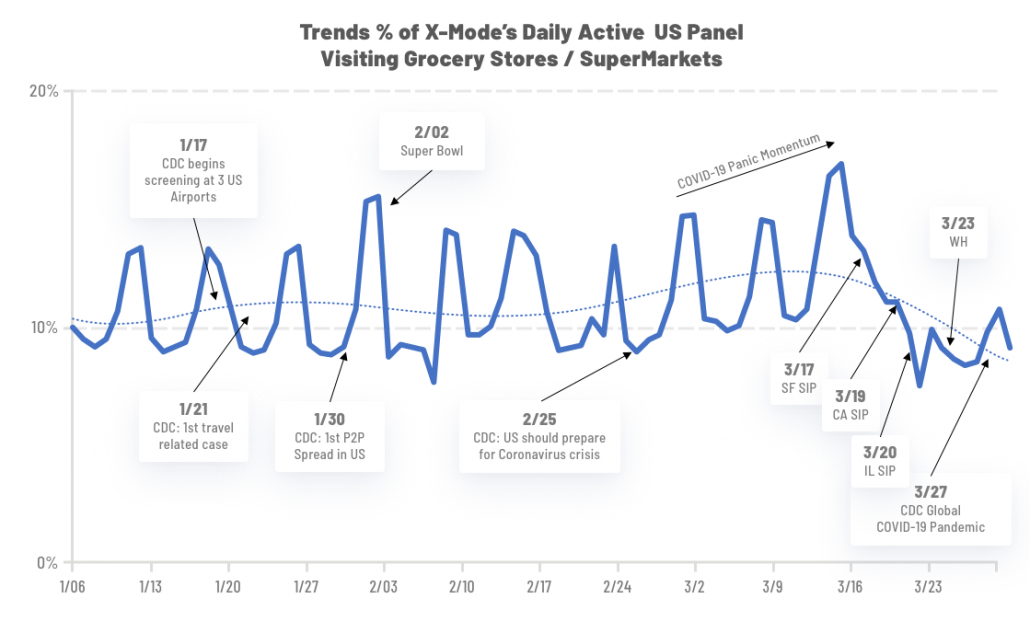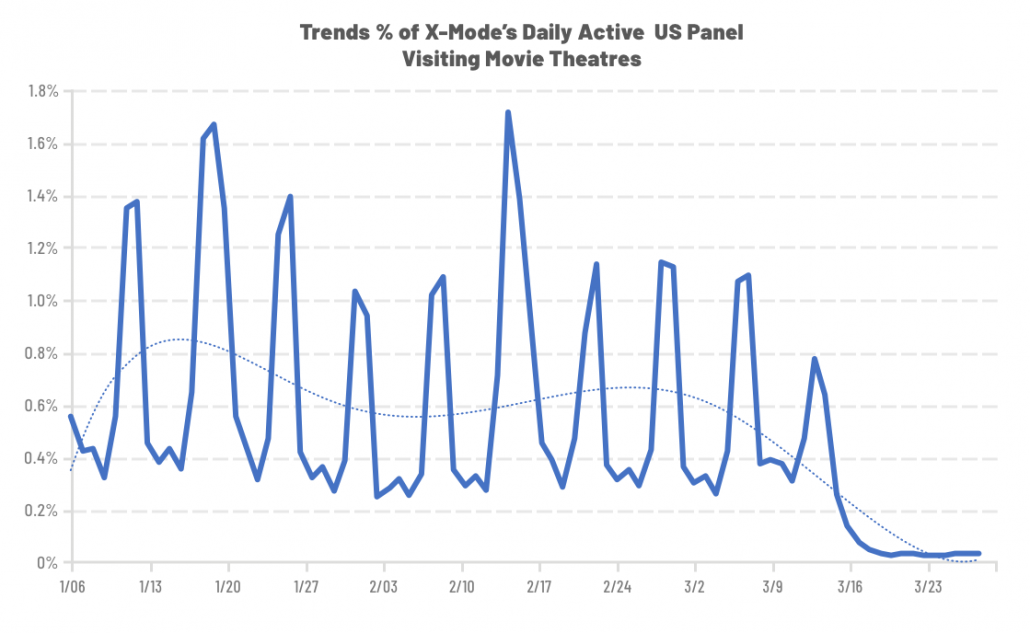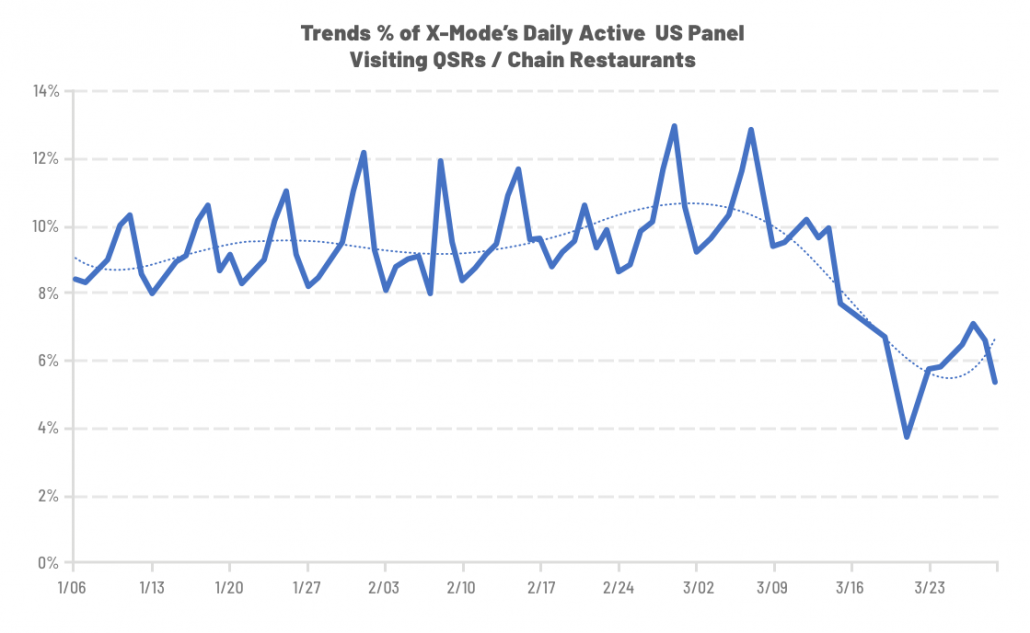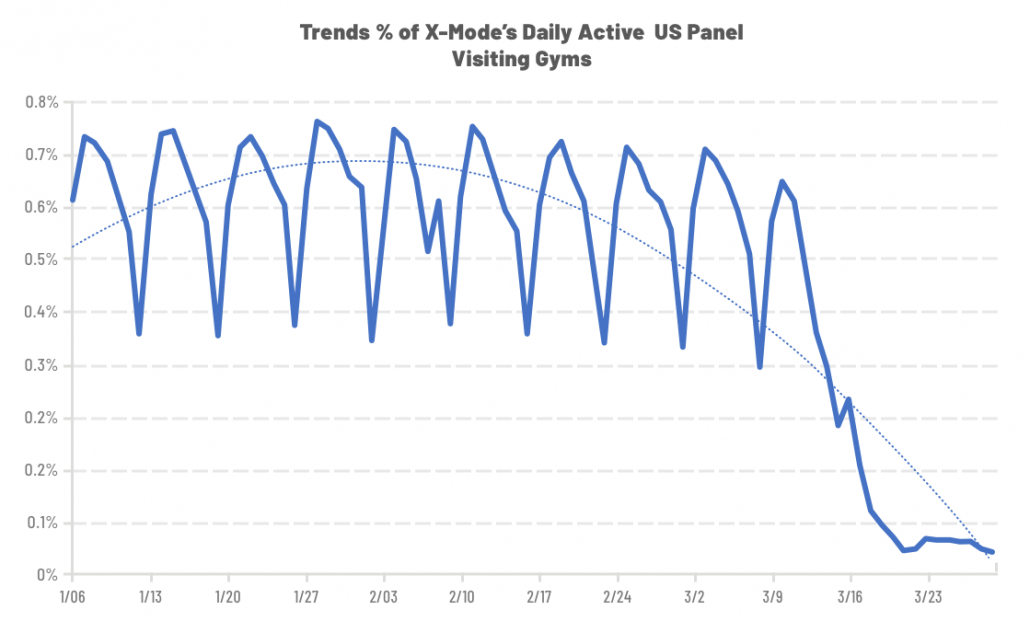Location Data in Action: COVID-19 Impacts Foot Traffic in Grocery Stores, Gyms, and More.
X-Mode leverages its location data panel to understand visitation patterns and foot traffic to key venues in cities impacted by COVID-19 across the country.
By Joseph Green
We are living through uncertain times. The rampant spread of COVID-19 has forced millions of people into isolation. Many of them are confused and afraid. Unfortunately, the viral outbreak has also been accompanied by a surge of misinformation spread easily across social media. Misinformation is the enemy of order, and the bedfellow of panic; keeping ourselves properly informed is more important now than ever. In times like these, we here at X-Mode hope that our precise location data can be counted on to provide a clear picture of what’s really happening in the world.
For the next several weeks, X-Mode will be publishing reports and insights built off of location data from our platform pertaining to the ongoing COVID-19 pandemic. These data-based insights — provided by X-Mode in collaboration with our partners — are intended to provide clarity in a time of uncertainty.
One of the biggest news stories in the early days of the outbreak was its effect on brick-and-mortar businesses. From restaurants to fitness centers, the sudden shift towards social isolation had a devastating and unpredictable effect on the retail and service industries. As we have done in the past, X-Mode analyzed changes in foot traffic on our platform during this time. changes in movement alone can tell us a great deal about how society has already transformed.
In this first chart, we see a change in visits to grocery stores and supermarkets from January 6th through March 29th, 2020. Leveraging X-Mode’s US data panel, we are able to show visitation trends during this time overlayed with key news announcements from the CDC and Government. Shortly after the CDC announced that the US should prepare for the COVID-19 crisis, visitation trends to grocery stores experienced an uptick in “panic buying,” with sales in nonperishables such as dried beans increasing by up to 10% near the end of February. But by mid-March, this increase was short-lived as “shelter in place” orders were announced from California and Illinois.
Although grocery stores saw a surge in visitations, they were definitely the exception. Other venue categories showed a marked decrease in foot traffic, correlating with general trends towards social distancing. Below are charts showing foot traffic in movie theaters, QSRs and Major National Chain restaurants, and gyms.
As one can see, starting in the second week of March movie theaters saw a steep decline in attendance and eventually went to near zero by mid-March. High profile Hollywood productions have been postponed indefinitely, and many theaters have closed entirely. Some fear that the outbreak could pose an “existential threat” to the movie theater industry, and are calling for a bailout. This possibility became even more likely at the end of March, as attendance dropped to near zero. According to Variety, summer movie season — when studios make the majority of their money — will most likely be canceled entirely.
Traffic at QSRs and Major National Chain Restaurant venues also declined starting in early March. This industry has also been in the news, as restaurants have struggled to balance between continued demand for service and widespread closures. Some restaurants are remaining open for takeout and delivery, but others are closing entirely. This not only means a decline in foot traffic, but an upsurge in unemployment among low-wage service employees; hopefully the recently announced $2 trillion aid package will provide some relief to these businesses and workers.
Finally, we decided to look at visitation trends to gyms during the outbreak. This category predictably saw a steep drop in foot traffic in mid-March, when cities across the country shut down “non-essential” businesses. 24 Hour Fitness, one of the country’s largest privately owned fitness businesses, closed all 400+ of its nationwide locations. As more gyms followed suit, the numbers dipped nearly to zero. While some fitness instructors have found creative ways to teach classes remotely, gyms are yet another industry — dependent on medium to large gatherings of people — for whom COVID-19 may be a financial as well as a health catastrophe.
Check out X-Mode’s blog in the coming weeks for more updates on the intersection between location data and COVID-19. For more information on how location data insights can work for you, head over to our data licensing portal today.











